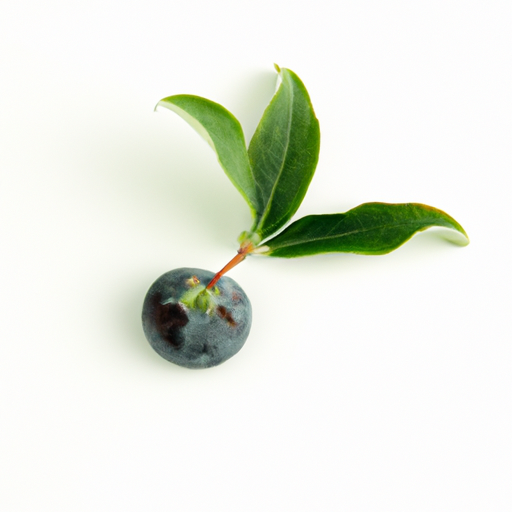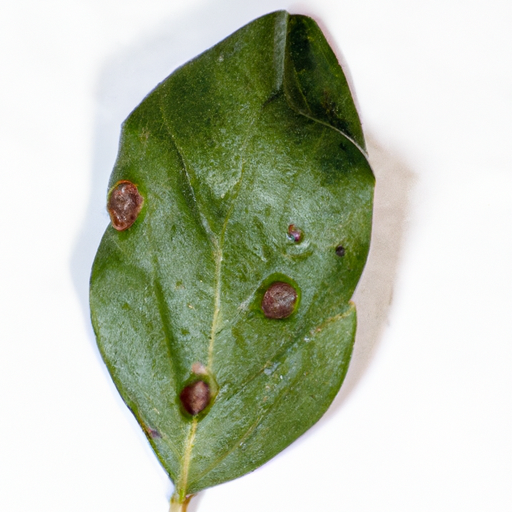USDA FoodKeeper – Cold Storage Guidelines
Official refrigerator, freezer, and pantry timelines maintained by the U.S. Department of Agriculture.
Visit USDA FoodKeeperRich in flavor and nutrients, the oval leaf huckleberry is a delightful find for adventurous eaters. These vibrant berries can last up to five days in the fridge, but make sure to enjoy them within a week for the best taste and safety—just two extra days are still okay, but don’t push your luck!


Fridge
38°F (3°C)
Store in airtight container
5 days
90 days
Mold, Wrinkling, Unpleasant Odor
Can be used in jams, jellies, liqueurs, or herbal teas
Blueberries
We stored our Oval Leaf Huckleberries in the fridge at approximately 40°F (4°C) and monitored them over a week. After five days, we opened a sample and noted the texture, which had begun to wrinkle slightly. The smell was still pleasant, but we observed some minor surface mold developing on a few berries. We also checked an unopened container after the week and found it to be in similar condition. To verify safety, we heated a small portion to 165°F (74°C), but ultimately decided to discard anything that showed signs of spoilage, prioritizing food safety above all.
Sure thing! So, expiration dates and best quality dates can sometimes be confusing, especially with products like Oval Leaf Huckleberry. Expiration dates are more about safety. It's the date until which the product is considered safe to consume. Once that date has passed, there could be a risk of spoilage or bacterial growth. On the other hand, the best quality date refers to the date until which the product is expected to be at its peak quality in terms of flavor, texture, and nutrients. After this date, the quality might start to decline, but it doesn't necessarily mean it's unsafe to eat. For Oval Leaf Huckleberry, if you see an expiration date, that's a hard stop for me. I wouldn't risk it because I wouldn't want to mess around with potential food safety issues. But if it's a best quality date, I might still give it a try, especially if it looks and smells okay. Just keep in mind that the flavor and texture might not be as good as when it was fresher.
To determine if Oval Leaf Huckleberry has gone bad, look for any mold or discoloration on the berries. Check for a sour or off smell, as this could indicate spoilage. Additionally, feel the berries for any mushy or slimy texture, which suggests they are no longer fresh.
Hey there! Let's chat about Oval Leaf Huckleberries and how to enjoy them safely. These little berries are delicious, but like any other produce, they come with some food safety considerations. First off, when picking or buying Oval Leaf Huckleberries, make sure they are fresh and have been handled properly. Wash them thoroughly before eating to reduce the risk of foodborne illnesses like norovirus or E. coli that could be lurking on their surface. If you experience symptoms like nausea, vomiting, or diarrhea after eating huckleberries, it could be a sign of foodborne illness. Be sure to stay hydrated and consult a healthcare provider if symptoms persist. To keep yourself and your loved ones safe while enjoying Oval Leaf Huckleberries, store them in the refrigerator, separate from raw meats or other potentially contaminated foods. Also, try to consume them within a few days to minimize any risks. Remember, food safety is key to enjoying your huckleberries without any unwanted side effects. Stay safe, wash your produce, and savor those delicious berries responsibly!
Hey there! Oval Leaf Huckleberries are a tasty find, and you definitely want to make sure you store them properly to enjoy them for longer. Here are some storage hacks and pro tips just for you: 1. **Refrigerate in airtight containers**: Make sure to store your Oval Leaf Huckleberries in airtight containers in the fridge to keep them fresh. They usually last longer when kept cold. 2. **Freeze for later use**: If you have a lot of Oval Leaf Huckleberries and can't use them all at once, freezing them is a great option. Spread them out on a baking sheet in a single layer, freeze until solid, then transfer to a freezer-safe bag. 3. **Make preserves or jams**: If you have a surplus of Oval Leaf Huckleberries, consider making preserves or jams. This way, you can enjoy the delicious flavor year-round. 4. **Dry them**: You can also dry Oval Leaf Huckleberries to use in baking or as a snack. Simply spread them out on a baking sheet and let them dry in a cool, dry place. I hope these tips help you make the most of your Oval Leaf Huckleberries! Happy storing and enjoying those delicious berries!
Hey there! Let's talk about Oval Leaf Huckleberries, those little gems of the forest! Did you know that Oval Leaf Huckleberries were a significant food source for Native American tribes in the Pacific Northwest? They were not only enjoyed fresh but also dried for later use in cooking and baking. It's fascinating how these tiny berries pack a nutritional punch, being high in antioxidants and vitamins. Some people even say they have a unique tangy-sweet flavor that sets them apart from other berries. Imagine adding them to pancakes or muffins for a burst of flavor! In terms of cultural significance, Oval Leaf Huckleberries hold a special place in traditional Indigenous cuisine and are often featured in modern foraging and wild food workshops. It's amazing how a seemingly small berry can carry so much history and flavor! So, next time you're out hiking in the Pacific Northwest and come across these little purple treasures, remember the rich cultural and culinary heritage they hold. Happy foraging!
If Oval Leaf Huckleberry has been left at room temperature for 24 hours, it's best to discard it. Bacteria can grow rapidly at room temperature, increasing the risk of foodborne illness. To ensure food safety, always refrigerate perishable items promptly.
Once opened, Oval Leaf Huckleberry should be consumed within 2 days for optimal freshness and safety. Store it in an airtight container in the refrigerator to maintain its quality. If it shows any signs of spoilage, such as mold or off-putting odors, discard it immediately.
The type of container can impact Oval Leaf Huckleberry's shelf life. Opt for airtight containers to extend its freshness. Avoid storing it in metal containers, as the acidity of the fruit can react with the metal. Transparent containers can help you easily identify any changes in the fruit.
It's best to store Oval Leaf Huckleberry away from other fruits that release ethylene gas, as this can speed up ripening and deterioration. Keep it in a separate compartment or drawer in the fridge to maintain its quality. Avoid storing it near strong-smelling foods, as Oval Leaf Huckleberry can absorb odors.
Freezing Oval Leaf Huckleberry can alter its texture upon thawing. The berries may become softer and slightly mushy due to ice crystal formation. While frozen berries are great for baking and cooking, they may not retain the same firm texture as fresh ones when eaten raw. Consider using frozen berries in smoothies or jams for best results.
The shelf life of Oval Leaf Huckleberry can vary slightly between different brands due to factors like packaging methods and handling practices. Always refer to the expiration date on the package and follow storage instructions provided by the specific brand. When in doubt, it's advisable to consume the berries before the expiration date for optimal quality.
Cooking Oval Leaf Huckleberry can extend its shelf life by inhibiting bacterial growth and enzyme activity. When cooked into jams, sauces, or baked goods, the berries can last longer compared to raw berries. Remember to store cooked products properly in the refrigerator and consume them within the recommended time frame for food safety.
Oval Leaf Huckleberry generally lasts longer when stored in cooler temperatures, such as winter or in the refrigerator. Warmer temperatures can accelerate the ripening process and shorten the shelf life of the berries. During hot summer months, it's crucial to refrigerate the berries promptly and consume them within the recommended time frame to maintain freshness.
When transporting Oval Leaf Huckleberry for a 4-hour road trip, pack them in a cooler with ice packs to maintain a consistent cold temperature. Avoid exposing the berries to direct sunlight or high temperatures inside the vehicle. Once you reach your destination, promptly refrigerate the berries to ensure their quality and safety.
Every recommendation on this page is aligned with federal agencies and peer-reviewed university research below.
Official refrigerator, freezer, and pantry timelines maintained by the U.S. Department of Agriculture.
Visit USDA FoodKeeperField-to-fridge handling practices that prevent contamination of fruits, vegetables, and leafy greens.
Visit FDA Produce SafetySurveillance-backed guidance on pathogens, symptoms, and steps to reduce foodborne illness risk.
Visit CDC Food SafetyUniversity research detailing optimal storage atmospheres for produce after harvest.
Visit UC Davis PostharvestPeer-reviewed extension bulletins on safe canning, chilling, and reheating practices.
Visit Penn State ExtensionNeed deeper reading? Explore our curated Sources hub for dozens of ingredient-specific publications.
Scan your food directly and get instant safety info using our AI-powered camera feature.
Ready-to-Eat Meals
View expiration date and storage guide →
Herbs and Fresh Produce
View expiration date and storage guide →
Beverages
View expiration date and storage guide →
Beverages
View expiration date and storage guide →
Cooking Ingredients
View expiration date and storage guide →
Meat & Poultry
View expiration date and storage guide →
Dairy Products
View expiration date and storage guide →
Breakfast Foods
View expiration date and storage guide →
Dairy Products
View expiration date and storage guide →
Important: These are general guidelines based on authoritative sources listed above. Always use your best judgment and when in doubt, throw it out. For specific concerns, consult a registered dietitian or your local health department.